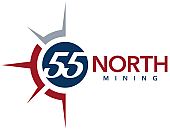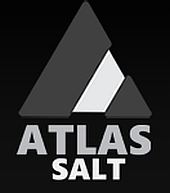 New Placer, Copaur define drill targets at Bolo
New Placer, Copaur define drill targets at Bolo
2022-01-24 10:29 ET – News Release
Also News Release (C-CPAU) Copaur Minerals Inc
Mr. Max Sali of New Placer Dome reports
NEW PLACER DOME AND COPAUR MINERALS DEFINES NEW DRILL TARGETS AT SEPARATE ZONE AT THE BOLO GOLD-SILVER PROJECT, NEVADA
New Placer Dome Gold Corp. and Copaur Minerals Inc. have released the results of the recently completed 14.4-line-kilometre induced polarization (IP)/resistivity geophysical survey completed during Q4 of 2021 at the Bolo gold-silver project in Nye county, Nevada. IP/resistivity surveys in conjunction with existing grid rock sampling and geological mapping have defined high-priority untested exploration targets north of drill confirmed gold mineralization at the South mine fault zone (SMFZ) along a major parallel fault structure (East fault).
Highlights of the IP/resistivity survey
- 2021 IP/resistivity surveys expand coverage one kilometre north of the 2019 survey limits to test underexplored northern extensions of the prospective Mine fault and East fault targets.
- Inverted chargeability and resistivity data highlight the boundaries of a 1,000-metre-by-500-metre outlier of Windfall formation rocks that occurs within the East fault target area.
- Windfall rocks are cut but fault-controlled jasperoid units and coincident arsenic, barium and antimony pathfinder element anomalies within surface grid rock samples.
- The results highlight the prospective East fault that hosts an outlier of the Windfall formation, which is the primary host for gold mineralization at the South mine fault zone that has yet to be drill tested.
Max Sali, chief executive officer and founder of New Placer Dome, commented: “We are excited to expand our focus to areas beyond the South mine fault zone and Uncle Sam prospect. The favourable geology, structure and pathfinder element anomalies highlighted in the East fault area provide a compelling exploration target worthy of significant follow-up work, including future drilling. This is further underpinned by the results of the 2021 IP/resistivity surveys that provide evidence of favourable geology and potentially mineralized fault structures extending to depth.”
IP/resistivity survey details
A sharp resistivity gradient associated with depressed chargeability values defines the eastern fault boundary of the Windfall formation in the East fault area. A significant chargeability contrast marks the fault boundary with younger shaley units to the west. Significantly, chargeability inversions define an internal fault structure within the mapped Windfall formation, associated with fault-related jasperoids and anomalous As, Ba and Sb pathfinder values. The geophysical data suggest there may be considerable vertical offset along the structure within areas of the Windfall formation.
The East fault target area Windfall formation is largely underexplored and untested by drilling. An internal fault structure defined by chargeability inversions and associated with jasperoid and elevated pathfinder values within Windfall formation rocks represents a compelling, high-priority exploration target. The company plans to follow up with additional prospecting and rock sampling grids in the northern areas of the Bolo project to further refine targets prior to drilling.
Methodology and quality assurance/quality control
Five IP/resistivity lines were completed during Q4 of 2021 at the Bolo gold-silver project. The lines are spaced 200 metres apart, with line lengths of approximately 2,900 metres. Data were collected using the direct current resistivity, induced polarization (DCIP) method on a 16-channel pole-dipole array with a dipole size (a-spacing) of 100 metres. A GDD GRx16 receiver and GDD 5000W-2400V-20A IP Tx model Tx4 transmitter were used. Raw data were loaded into GDD IP postprocess software and Geosoft Oasis Montaj software for quality control and review. The reviewed data were used to produce pseudo section plots of apparent resistivity and apparent chargeability, and were the input for the inversion. Inversions were completed using the UBC-GIF DCIP2D inversion codes. Each line of data was inverted independently. The resistivity and IP inversion is a two-step process. The resistivity inversion is run first, and this model is used in the chargeability inversion. Multiple inversions were completed for quality control.
About New Placer Dome Gold Corp.
New Placer Dome Gold is a gold exploration company focused on acquiring and advancing gold projects in Nevada. New Placer Dome’s flagship Kinsley Mountain gold project, located 90 kilometres south of the Long Canyon mine (currently in production under the Newmont/Barrick joint venture), hosts Carlin-style gold mineralization, previous run of mine heap leach production, and National Instrument 43-101 indicated resources containing 418,000 ounces of gold grading 2.63 grams per tonne Au (4.95 million tonnes) and inferred resources containing 117,000 ounces of gold averaging 1.51 g/t Au (2.44 million tonnes). The Bolo project, located 90 km northeast of Tonopah, Nev., is another core asset, similarly hosting Carlin-style gold mineralization. New Placer Dome also owns 100 per cent of the Troy Canyon project, located 120 kilometres south of Ely, Nev. New Placer Dome is run by a strong management and technical team consisting of capital market and mining professionals with the goal of maximizing value for shareholders through new mineral discoveries, committed long-term partnerships and the advancement of exploration projects in geopolitically favourable jurisdictions.
Qualified person
The scientific and technical information contained in this news release has been reviewed and approved by Kristopher J. Raffle, PGeo (BC), principal and consultant of APEX Geoscience Ltd. of Edmonton, Alta., a director of New Placer Dome and a qualified person as defined in National Instrument 43-101 — Standards of Disclosure for Mineral Projects. Mr. Raffle verified the data disclosed, which include a review of the analytical and test data underlying the information and opinions contained herein.
We seek Safe Harbor.




























